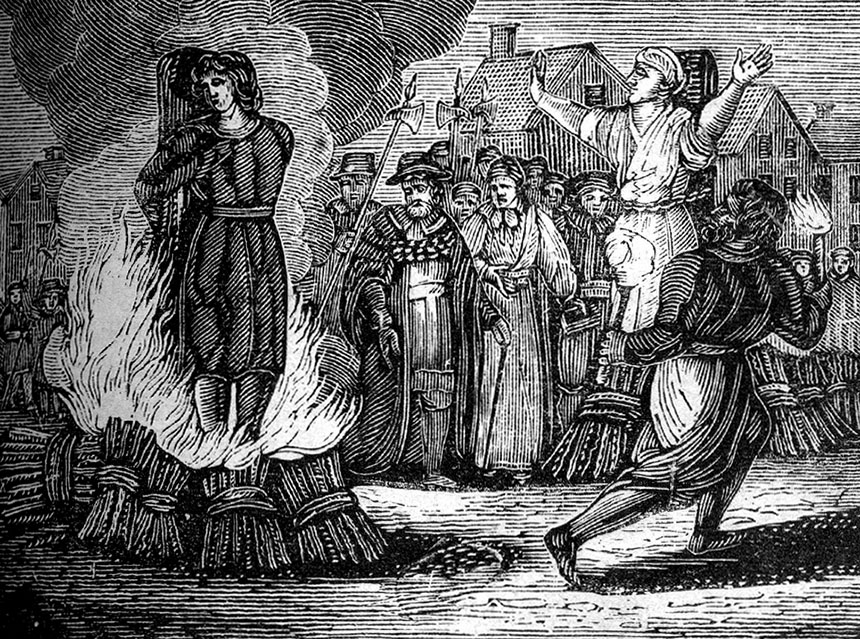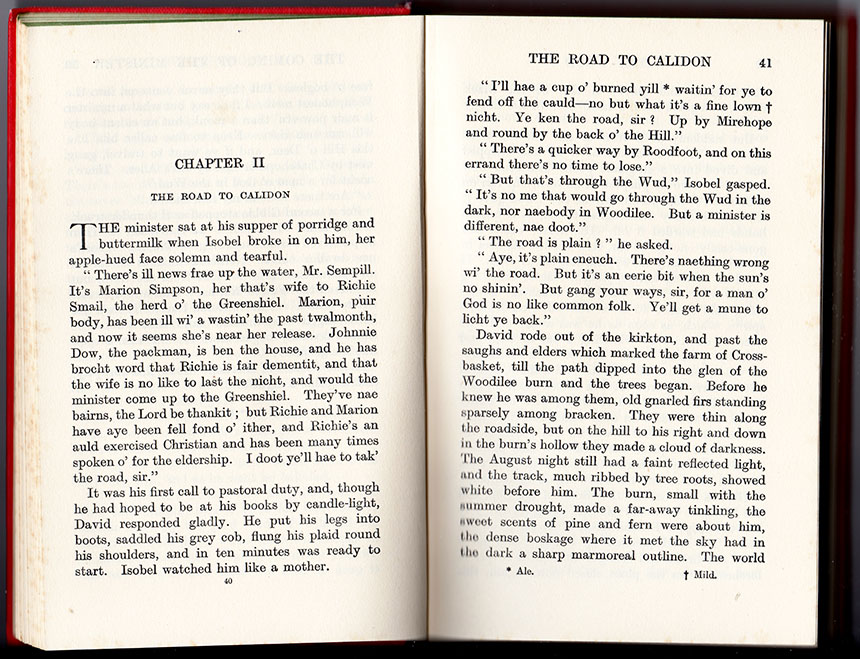
Source: Wikimedia Commons
Witch Wood. John Buchan, first published 1927.
Silence of the Gods: The Untold History of Europe’s Last Pagan Peoples. Francis Young, Cambridge University Press, 2025. 432 pages.
The history of witch-burning in Scotland is horrifying. Between 4,000 and 6,000 people were tried for witchcraft in Scotland, far more than in England. The trials continued into the late 1600s, but the panic over witches had pretty much subsided by 1707.
How in the world do we understand how a century of witch trials in Scotland was so quickly followed — in the very same Scotland! — by a century of the Enlightenment? How was it that these prominent elements of Scottish history were mirrored so quickly in America?
I am no historian, and I don’t have any thorough answers for these questions. For one, the history of Scotland is bafflingly complicated. By comparison, it seems to me that the histories of England and America are much easier to get one’s head around. But I do think I can see just a glimmer of how the sudden transition from witch trials to the Enlightenment unfolded in Scotland.
I often read two books at once, one fiction and one nonfiction. By coincidence, I was reading John Buchan’s Witch Wood at the same time I arrived at Chapter 4 of Silence of the Gods. (A hat tip here to Chenda, for recommending this book.) That chapter is about the 17th Century, with the title “Antiquarians and Witch-Hunters.”
Silence of the Gods limits itself to places farther north and more remote than Scotland. But it’s clear that, though Scotland excelled at burning witches, the witch panic was everywhere in Christendom during the 17th Century. But it’s only in Scotland where a particular zeal for witch-burning was immediately followed by the work of the Enlightenment. Surely one set the stage for the other, in some strange way?
I had a long discussion with ChatGPT about this. ChatGPT’s bottom line was: Religious zealotry built the roads that the Enlightenment ran on.
There are a couple of key points to understanding this. The first is that, during the 17th Century, Scotland’s kirk had far too much civil power. That is, as we Americans would understand it, there was very little separation between church and state. Scotland was divided by religious conflict and was in great turmoil. In ways that I don’t understand very well, the deposition of James VII, followed by William III and Mary II (1689) set the stage for important changes in how Scotland was governed. The Settlement of 1690 preserved the church but handed civil power in Scotland back to civil authorities.
Americans learned an important lesson from this. To quote ChatGPT: “Seventeenth-century Scotland showed what happens when a church (whether presbyterian or episcopal) fuses with state power—persecution, ‘enthusiasm,’ and civil strife. Scots-Irish Presbyterians who emigrated carried that memory and became key allies of Baptists in the push for disestablishment in the states (notably in Virginia).”
John Buchan’s Witch Wood is a fictional account of what village life was like in Scotland in 1644. Buchan knew this history. At the time he was writing Witch Wood, he also was writing a biography of James Graham, the 1st Marquess of Montrose, who figured prominently in Scotland’s religious conflicts of the 17th Century.
Buchan probably expected his readers of a hundred years ago to know much more about Scottish history than most of us do today. That lack of knowledge of Scottish history makes Witch Wood harder to appreciate. One thing that strikes me about Witch Wood, though, is Buchan’s harsh treatment of the kirk, its theologies, and the zeal of the men who held power in the church. To put it coarsely, Buchan did not find it necessary to kiss the church’s feet, which makes me think that by 1927 Scotland was well along in losing its religion. That draws our attention to yet another mystery about the problems of America: How was it that England, Scotland, and even Ireland lost their religion, while Americans are now dealing with an attempted takeover by Christian nationalists? In disturbingly many ways, what’s happening in America today resembles what happened in Scotland in the 17th Century (bitter, even violent division with the empowerment of fanatics), fused with some political innovations developed in Germany in the 1930s.
I’m only halfway through Silence of the Gods, but one thing is perfectly clear. The Christianization of the far north — Norway, Sweden, Finland, parts of Russia, Latvia, Estonia, Lithuania — was just as violent and ugly as what happened to the south.
All of this is horrifyingly relevant today, because it’s still going on, in America at least. What will it take for people to remember that to be governed by zealots is to be governed by the devil?

Witch Wood, Chapter 2. Click here for high-resolution version.
